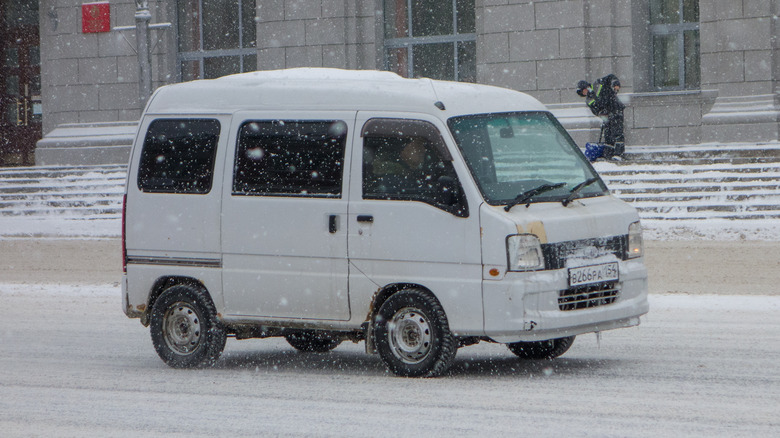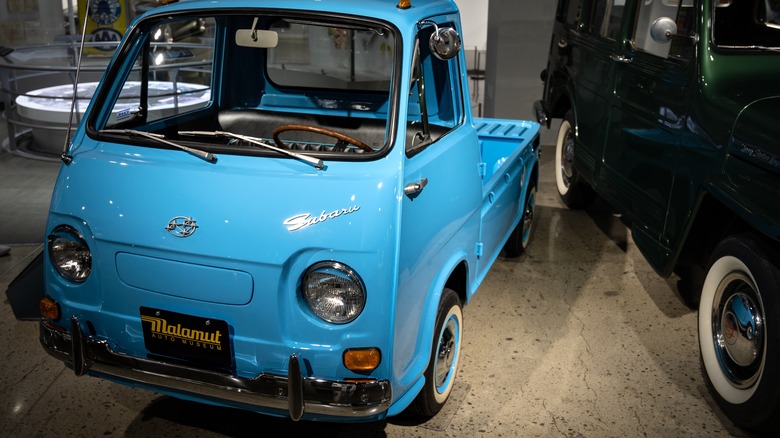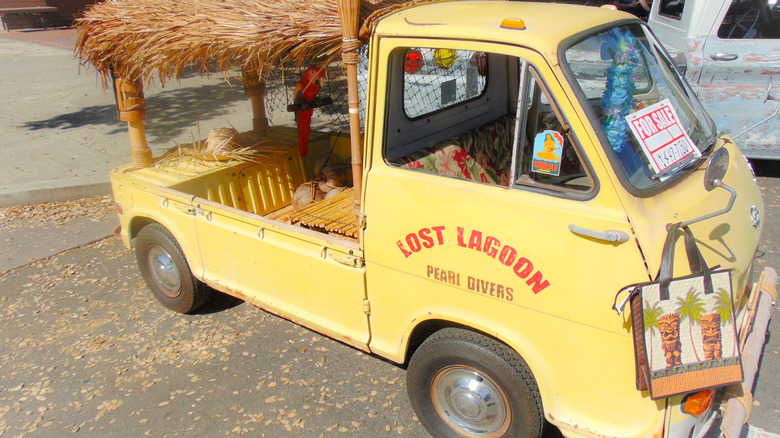Here's Why So Many People Love The Subaru Sambar
Americans know the Subaru brand for its raucous yet potent Boxer engines and symmetrical all-wheel drivetrain, with the fire-breathing Impreza WRX and Forester STIs of the late 90s typically first in mind. But a quirky Subaru Kei car is starting to make waves stateside, and it has nothing to do with the high-speed, tail-sliding histrionics of its high-strung family members.
First introduced at the 1960 Tokyo Motor Show as Japan's first government-compliant Kei (Keitora) truck, the Subaru Sambar is currently in its eighth generation in Japan. From the looks of it, the Sambar is not the first in mind when talking about an American family car. For starters, it's not an SUV or crossover. Instead, it's a Lilliputian minivan that auto YouTuber Doug DeMuro said is three feet shorter than a compact Mini Cooper.
The Subaru Sambar is practical to a fault
The Subaru Sambar may be smaller than a supermini, but Subaru did wonders with the vehicle's packaging. It has two front doors and a pair of sliding doors in the second row, and it has a four-seat cabin with ample legroom and shoulder room. Meanwhile, the rear seats are removable, revealing cargo van levels of space, but it still offers tons of room in the back with the rear seats in place.
In addition, the front and rear seats could recline flat and combine for an adult-sized bed, an excellent feature for van lifers and outdoor enthusiasts. Although the barebones cabin is not as posh as modern vehicles with soft-touch plastics and sustainable trim, the Sambar has two glass sunroofs that tilt or open, allowing the outside breeze to air the cabin while you sleep or hang out. It's incredible how Subaru engineers could do so much with so little space, which is why Japanese buyers couldn't get enough of the Sambar.
Rear-engine architecture
Notice the lack of a front nose? That's because the Sambar is a rear-engine microvan with a rear bumper that doubles as a hood and folds down to reveal the equally-micro power source. The Subaru Sambar debuted with a 356 cc two-stroke two-cylinder gas engine. Still, later models received upgraded three or four-cylinder machines with optional supercharging, rated for about 44 to 56 horsepower.
The icing on the proverbial cake is the available all-wheel drivetrain. The Sambar may not have mountains of oomph, but the AWD system ensures ample grip on the beach or the wild outdoors. The seventh-gen Sambar that debuted in 2009 was nothing more than rebadged Daihatsu Hijet micro vans, but Subaru didn't mess with the Sambar's proven formula of offering more for less. Moreover, the Sambar remains available as a truck with a short bed and two-passenger cabin, perfect for small businesses or as a rugged, carry-all roundabout.


